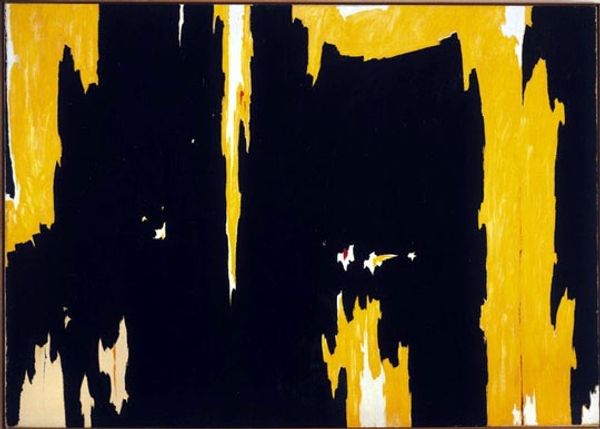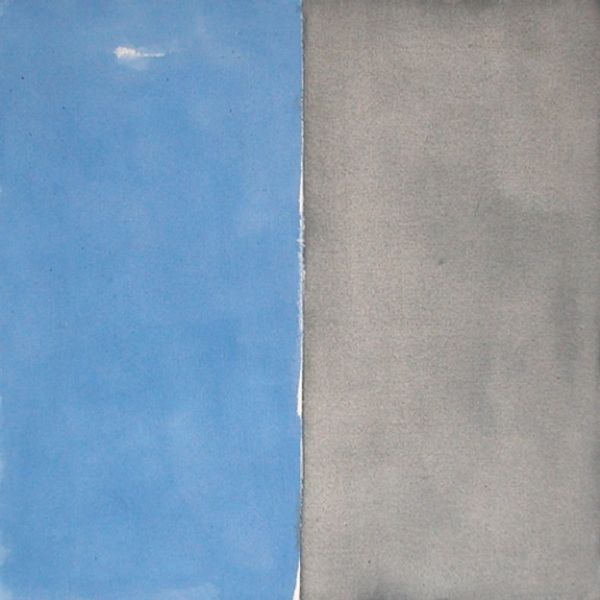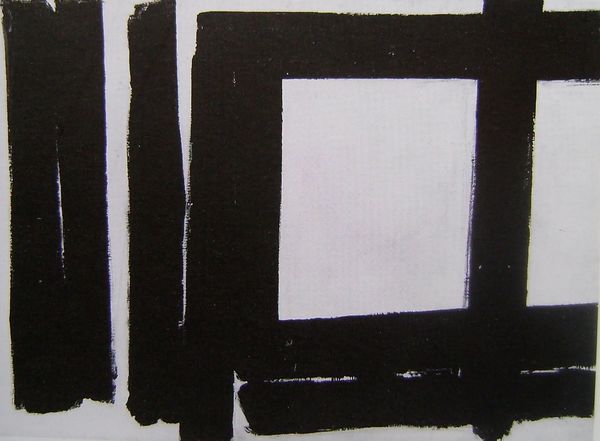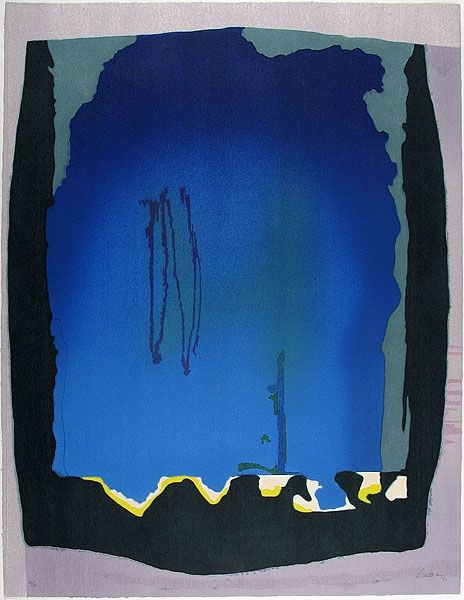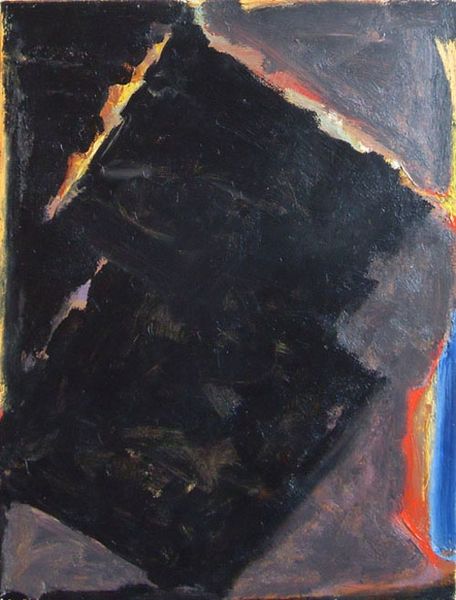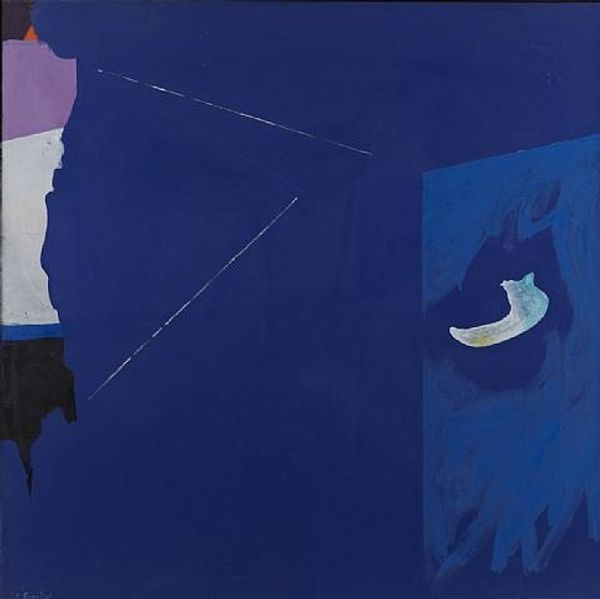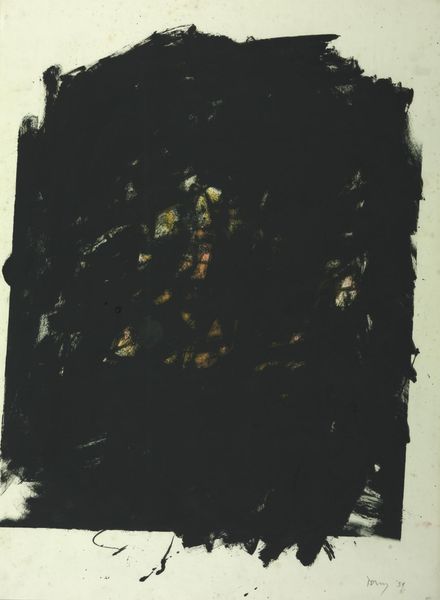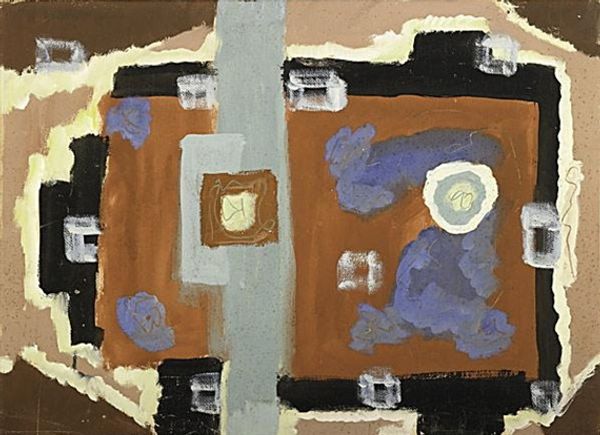
Copyright: Alvaro Lapa,Fair Use
Editor: This is "Walk - 4" by Alvaro Lapa, painted in 1984 using acrylic. The strong contrast between the black shapes and the pale background gives it a rather stark feel, almost architectural. What stands out to you in terms of its historical context? Curator: Well, it's fascinating to consider this within the socio-political climate of 1984. Think about the rising urban development and decay during that era, particularly in post-industrial societies. Do you see echoes of urban landscapes, maybe fragments of buildings or pathways, even in these abstract forms? Editor: I see what you mean! The shapes could definitely be interpreted as remnants of buildings or scaffolding. Is it fair to call it a commentary on urban change then? Curator: Perhaps not explicitly, but abstract expressionism often reflects the anxieties and transformations of its time. Consider how museums and galleries were showcasing these types of works. Did this elevate artists that made social commentaries to challenge power structures of art institutions? What statements do they implicitly make by being exhibited? Editor: That’s an interesting angle. So the painting's "politics" might be as much about who gets seen and validated as about the buildings themselves. Curator: Precisely. And think about the politics of imagery in the '80s – the rise of media, advertising... does this painting offer a visual counterpoint to that, a space for individual interpretation against the flood of mediated images? Editor: It feels less about immediate impact, more about sustained engagement. Something you return to, to think with. Curator: Exactly. Lapa seems to invite viewers to construct their own narratives. In this context, its exhibition serves as counter-narrative against traditional aesthetic and socio-political values Editor: I never thought about abstract art having a narrative beyond the pure visuals. This was super interesting, thank you! Curator: My pleasure! It is all a matter of examining how social contexts shape what art is and can be.
Comments
No comments
Be the first to comment and join the conversation on the ultimate creative platform.
